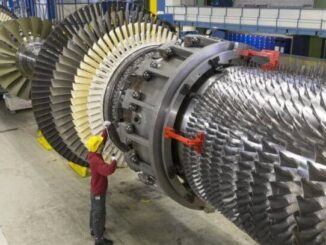
Sometimes I hear people going on about how rapidly the world is changing. “The pace is unbelievable, who can keep up…” Most times I roll my eyes a fair bit, a good 80 degrees I’d say. Obviously things are changing, but a new app that helps order pizza or a tool that writes an essay for us instead of doing the hard work ourselves is not that revolutionary given the context of the last century (in case you ever wonder, there will always be enough f-bombs and crappy analogies around here so that you’ll know ChatGPT is not present in this column). Our grandparents or great grandparents – now that’s change. Imagine growing up with no power, no plumbing, no autos… and then finding yourself in an old folks home with a cell phone the kids gave you to master and those old people are thinking “wow I used to have to go outside to take a crap” (see what I mean?) And now, there’s an app actually called Poop Map that the kids love (?). That is real change in one’s lifetime.
In the energy world, we are told relentlessly that an energy transition is underway, and that the rate of change is dizzying and unprecedented. To a certain extent that is true, and new technologies are being developed that might be quite revolutionary – assuming we can integrate them in anything resembling a cost effective manner.
But while we’re facing the blinding light show that is the media hype over the energy transition many want – wind and solar and battery tech and Tesla -, spellbound and hypnotized by the spectacle (because our ethnocentricity and lemming-media limits exposure to anything else), behind our backs 7 billion people are putting together their own show that will dwarf ours. And brave souls here in the west are making enormous progress in a direction that a lot of people don’t want to see.
Here’s a quick rundown of some of the bigger components that are largely met with unease, hostility, or shouting, and yet they are the future.
The first is the global rise of LNG as a fuel of choice for the coming decades. Country after country is signing LNG supply deals for 20 years or even more, contracts which are supporting the construction of infrastructure at either end – terminals to load LNG onto ships, and receiving terminals to distribute it to energy-starved countries. The US is expected to go from exporting zero LNG a decade ago towards exports of up to 30 billion cubic feet per day by the end of the decade, and the list of consuming nations is long and desperate to get what they can.
Emissions-wise, this makes total sense, because for much of the developing world the choice is coal, LNG, or nothing. Offers of endless solar fields are not amusing when the population wants refrigerators and air conditioners, at a minimum. But these developing countries must face the juggernaut of policy emanating from the west that does not want them to develop hydrocarbons of any sort. What to do?
And that brings us to BRICS, one of the big developing geopolitical entities that is being forced into existence.
Ten or fifteen years ago, a group of countries – Brazil, Russia, India China, and South Africa – formed what should have been BRICSA but for whatever reason they settled on BRICS. The original group took shape only as a method of attracting investment by highlighting opportunities, but over time it morphed into a more concrete organization, with their governments meeting regularly to develop policies that would benefit all members.
All well and good, however one would think – particularly here in the west – that the BRICS organization would be somewhat on its back heels and hiding behind a shrub with Russia being one of the key members. Russia’s invasion of Ukraine has been the biggest, worst setback to global peace in a long time.
It was with some surprise then that stories appeared in the news earlier this year about how multiple countries were looking to join BRICS. Bloomberg ran a story in April 2023 outlining 19 countries that submitted bids for membership.
In a startling sign of some of that change people talk about, the number of BRICS applicants reading for the hazing rituals has grown to a shocking 41 countries. The original BRICS group had about 3.2 billion citizens; the new applicants will add another 1.7 billion bringing the total BRICS population – if all join – to almost 5 billion people.
Compare this total to ‘the west’s’ population; if one includes philosophical teammates like Japan and Australia in the count along with western Europe, the US and Canada gives a population of under 1 billion.
The rush to join BRICS is from everywhere. South America, Africa, the Middle East, Asia… even Mexico. The group is holding a summit in August with plans to potentially introduce a new currency.
This group is willing to join with the west’s pariah, Russia, because it sees a path towards defining its own future, and you can bet that energy is a large part of that. Why should 5 billion people take orders from the west with regards to what is and what is not allowable in terms of energy development?
Western stances on energy are absolutely bizarre, and from the other side of the developmental wall, must be at best perplexing and at most infuriating. Activists groups from Europe and the US push to prevent development of the East African Oil Pipeline, while Canada builds one, President Biden urges American producers to drill more, and Europeans build LNG terminals and burn coal.
The most bizarre western energy antics however seem to revolve around nuclear energy, another piece of the energy puzzle that appears to be poised for rapid and significant growth even while the west ties itself into knots as to whether or not nuclear energy should be allowed.
In ‘the west’, or westernized society, nuclear is generally a dirty word. The potential devastation of a bad nuclear accident is seared in every brain. We all know the words Three Mile Island, Chernobyl, Fukushima…not as tourist destinations but as locations of bad nuclear juju.
Germany and Belgium recently shut down a number of perfectly good nuclear reactors for some sort of ‘environmental reasons’ at the same time other countries in Europe, such as the Netherlands, rush to build new ones within a hundred miles of where the old ones were shut down. California and New York State shut down nuclear reactors, and then just the other day Ontario announced a massive new nuclear power development.
Ontario’s nuclear announcement is huge. Actually, there were two announcements, both huge. On July 5, the province announced plans to construct new nuclear capability at the existing Bruce Power site, adding 4,800 MW of power capability, enough to power 4.8 million homes.
Two days later, Ontario announced plans to build three small modular reactors (SMR) at the Darlington site, adding a further 1,200 MW of capacity.
Ontario went through a phase of green madness some 15 years ago, pledging to go all-renewable or some such, and it was a disaster. Now, the province is showing leadership in meeting climate goals with true baseload, reliable power, the exact sort of thing renewables can’t do.
Ontario isn’t alone; many governments around the world are brushing aside the nuclear naysayers (of which there are many, including Greenpeace). Nothing is perfect, but in a world that is apparently willing to go carbon-free or die trying, nuclear is the clearest long-range plan.
Ontario is also pushing the frontier with SMRs, a very important development. If these small reactors become widespread, the market would be enormous – they are quicker and cheaper to construct, and (appear to) make economic sense at small scale. Proponents have flagged, for example, that SMRs could be used in the oil sands to generate steam and replace a lot of natural gas combustion.
The US military is taking it one step further. The Eielson Air Force Base in Alaska is looking to pilot a micro-reactor. Per their website, “…Micro-reactors are a simple and compact form of nuclear reactor capable of producing between 1-20 megawatts (MW) of carbon free electricity.” Another US government website notes: “These compact reactors will be small enough to transport by truck and could help solve energy challenges in a number of areas, ranging from remote commercial or residential locations to military bases.”
The nuclear part is an oddity that fits in to the picture in the weirdest of ways. Nuclear power is the only real option for zero emissions power at a scale large enough to meet the world’s needs. In yet another geopolitical curiosity, the west has tied itself into knots over nuclear energy; one camp sees it as a threat to mankind, the other camp seeing it as energy’s salvation in a world that wants lower emissions. One recent study showed that 57 percent of global systemically important banks explicitly exclude nuclear power from financing considerations.”
These might seem like disparate energy threads, and in some way they are. But what is becoming clear when one adds them together is the following.
The rapidly growing BRICS group is looking to forge its own path as a way to counter the influence of the west and/or have a more active voice in ‘how they should be developing’.
One of the key developments for much of the world is the rise in LNG, which is happening against a backdrop of very powerful western voices that do not want that to happen.
Beyond that, we are seeing nuclear power on the ascendence in a number of forms – large reactor development (Netherlands, Ontario), small modular reactors (Ontario announcement 2), and even micro-reactors (US military base). These nuclear developments are happening against a backdrop of animosity, negative media coverage (the two CBC stories linked above devote half the space to nuclear opponents), and ferocious lobbying by certain renewables interests, the exact sort of thing those renewable interests accuse oil/gas industry participants of doing.
Well, I’m an oil/gas industry participant, and this trajectory is, to me, inevitable. First, people in charge of actually making things work will start to assume control, on a global basis. That will mean the rise of LNG over the coming decades as the shortest, easiest path to decarbonize (as the US has proved; they have been more successful than most nations in cutting emissions by switching from coal to natural gas).
Next, because energy demand never ceases to stop growing, as the cheapest and easiest-to-extract natural gas reserves are developed, nuclear power will grow in stature to provide the reliable baseload power the world needs in huge and growing quantities.
Alongside this path will most likely be developments in hydrogen and batteries and other peripherals that fill the gaps that the main building blocks can’t meet. There is always the possibility that there will be a major technological breakthrough in one of these energy system components, but we can’t plan on that. We have to go with what is proven.
That’s the energy transition that appears most inevitable.



